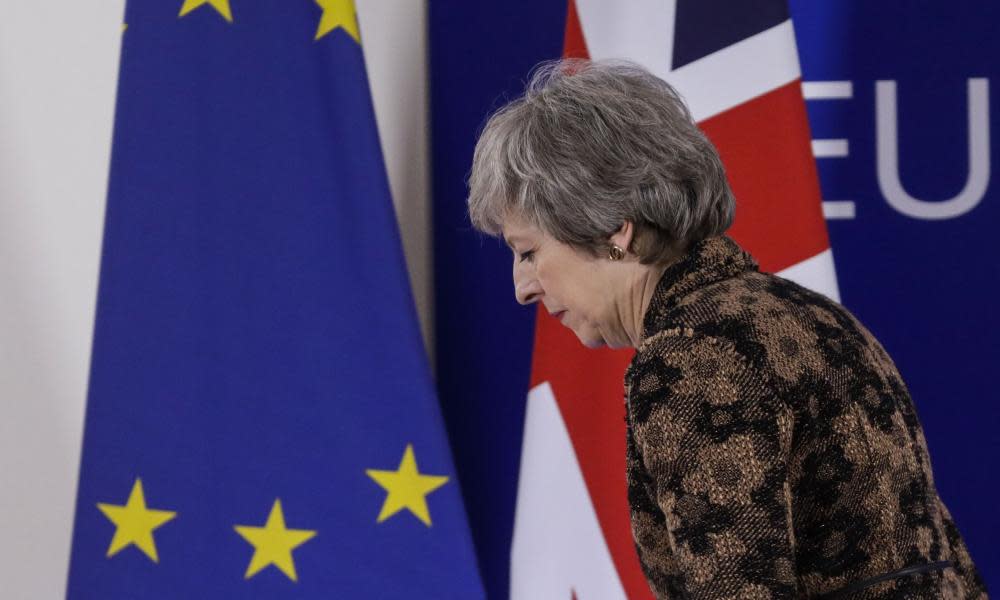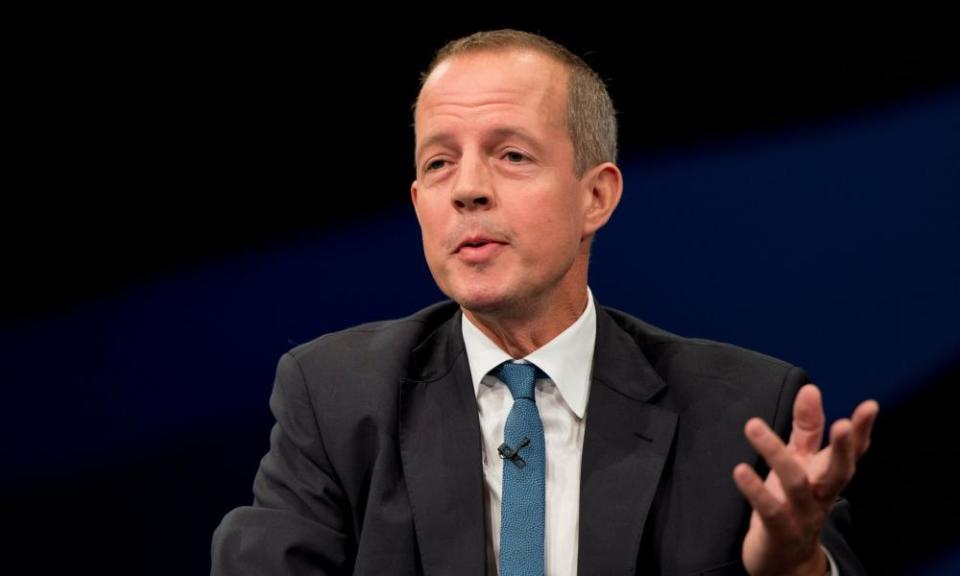Brexit: what options are mooted to break the stalemate?

As Theresa May prepares to address parliament on Monday after Downing Street denied there were plans for a second referendum, here are some of the options being floated as a solution to the current impasse.
Take the pulse of parliament
Even some who believe May’s deal is a reasonable compromise, such as the education secretary, Damian Hinds, think it would be helpful to test how much support alternative options have among MPs, through a series of indicative votes, preferably this side of Christmas.
He, along with the Brexiter international trade secretary, Liam Fox, believe doing so would underline that alternatives, including a Norway-style relationship with the EU, would not command a majority.
MPs would then have to face the real choice: May’s deal, another referendum or leaving with no deal.
Other proponents of this approach, including the work and pensions secretary, Amber Rudd, believe it would reveal that May’s strategy of aiming to placate the right wing of her party with tweaks to the backstop is unsustainable.
Rudd wrote in the Daily Mail on Saturday that the government should forge a consensus across party lines, implying a tack toward a softer Brexit. Other enthusiasts for testing the will of parliament as soon as possible include the chancellor, Philip Hammond, the business secretary, Greg Clark, and the lord chancellor, David Gauke.
Norway-plus
The former Conservative minister Nick Boles has been enthusiastically promulgating the idea of a Norway-style Brexit for several months, as has the Labour backbencher Stephen Kinnock.
They have the backing of a number of Conservative MPs, including the former Number 10 adviser George Freeman and the former minister Oliver Letwin.
The group is in regular touch with ministers, and Boles claims to have sounded out at least five cabinet members. Some of those backing the idea of indicative votes are doing so because they believe a majority could be brought together behind a Norway-style deal.

Many at Westminster believe Boles is acting as a proxy for his longtime ally, Michael Gove, but both men deny that.
Many Labour MPs are sceptical of a Norway approach, but for different reasons. Some believe their constituents want a Brexit outcome that includes control of migration, which Norway would not, others reject a soft Brexit in favour of aiming to overturn it altogether.
Second referendum
Support for a “people’s vote” at Westminster has mushroomed in recent weeks, as the various Brexit camps have become increasingly entrenched and the likelihood of the prime minister winning support for her deal has diminished.
Cabinet ministers including Rudd believe the government may have to resort to a referendum as a way out of the stalemate in parliament, and several other senior Tories, including Jo Johnson and Sam Gyimah, left the government to campaign for such a vote.

The prime minister, however, is opposed to the idea, and Downing Street has vehemently denied reports that senior aides, including her chief of staff, are coming round to it.
The Labour leader, Jeremy Corbyn, is coming under intense pressure, both inside the shadow cabinet and from grassroots activists, to throw his weight behind a referendum. Party policy, thrashed out at Labour conference, suggests a vote of no confidence in the government must come first, after which Labour backing for a referendum would be “on the table”.
Several shadow cabinet members, however, including Angela Rayner and Rebecca Long-Bailey, have pointed to the risks of a referendum in recent days.
“Managed” no deal
With time running short for thorough no-deal preparations, Brexiters in cabinet and on the backbenches are shifting toward a halfway house they call a “managed no deal”.
The European Research Group chair, Jacob Rees-Mogg, has advocated the idea, as has leader of the Commons, Andrea Leadsom. The development secretary, Penny Mordaunt, who has remained in the government but said little in support of the prime minister’s deal, is expected to lend her backing to some version of a managed no deal this week.
It would see the government repudiate the withdrawal agreement containing the backstop and pursue a free-trade agreement instead. It would agree to pay perhaps half of the £39bn exit fee and seek to strike a series of quick deals on key issues such as aviation to avoid the worst potential disruption.
Most cabinet members are profoundly suspicious of the idea, believing it would be severely damaging economically, but the ambitious foreign secretary, Jeremy Hunt, gave a nod to the no-dealers in a Sunday Telegraph interview, in which he said Britain could flourish and prosper outside the EU without a deal.
Labour Brexit
Corbyn and his shadow Brexit secretary, Keir Starmer, insist that if May’s deal is voted down, their first priority would be to win parliament over to Labour’s alternative approach.
At the party’s conference in Liverpool in September, Corbyn told May: “if you deliver a deal that includes a customs union and no hard border in Ireland, if you protect jobs, people’s rights at work and environmental and consumer standards, then we will support that sensible deal. A deal that would be backed by most of the business world and trade unions too.”
There has been little talk of cooperation between the two parties’ frontbenches, with Tory whips instead trying to reach out to centrist Labour backbenchers, many of whom have hardened their support for a second referendum and would not back any Brexit deal.

 Yahoo News
Yahoo News 
